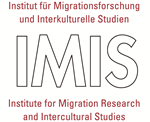The media has been quite instrumental in disseminating images about refugees. In particular, photographic images of the Dadaab refugee camp in Kenya’s media have conjured up impressions of humanity at its most vulnerability and utter hopelessness (Liisa Malkki 1996). Meanwhile, self representation, a nascent form of participatory journalism where refugees are empowered to visualise their own experiences, also known as pluralist photography, has been hailed as democratic, emancipatory and capable of countering constructs of refugees as portraits of bare humanity (Roland Bleiker & Amy Kay, 2007). Led by various humanitarian organisations, efforts at self representation are vibrant at the camp running alongside the regular photojournalistic work.Following the thoughts of Michael D. Harris (2003) on the theory of representation, the study probes how media representation of the Dadaab refugee camp in the Kenyan media on the one hand, and self representation of refugees on the other, conflate to produce images of refugees that conceal rather than reveal life in the refugee Camp. While not necessary aimed at making a comparison, the study investigates the way in which photographs from these two categories produce further ambiguity in the photographic representation of refugees.
Spectacles of Displacement, Institutional and Vernacular Photography on Refugees in Dadaab, North-Eastern Kenya
| Projektart | Promotion |
| Finanzierung |
|
| Themen |
|
| Disziplinen |
|
| Laufzeit | 10/2011 ‒ 12/2015 |
| Geographischer Fokus |
|
| Institutionen | |
| Beteiligte Personen |
|
| Kurzbeschreibung |
|







